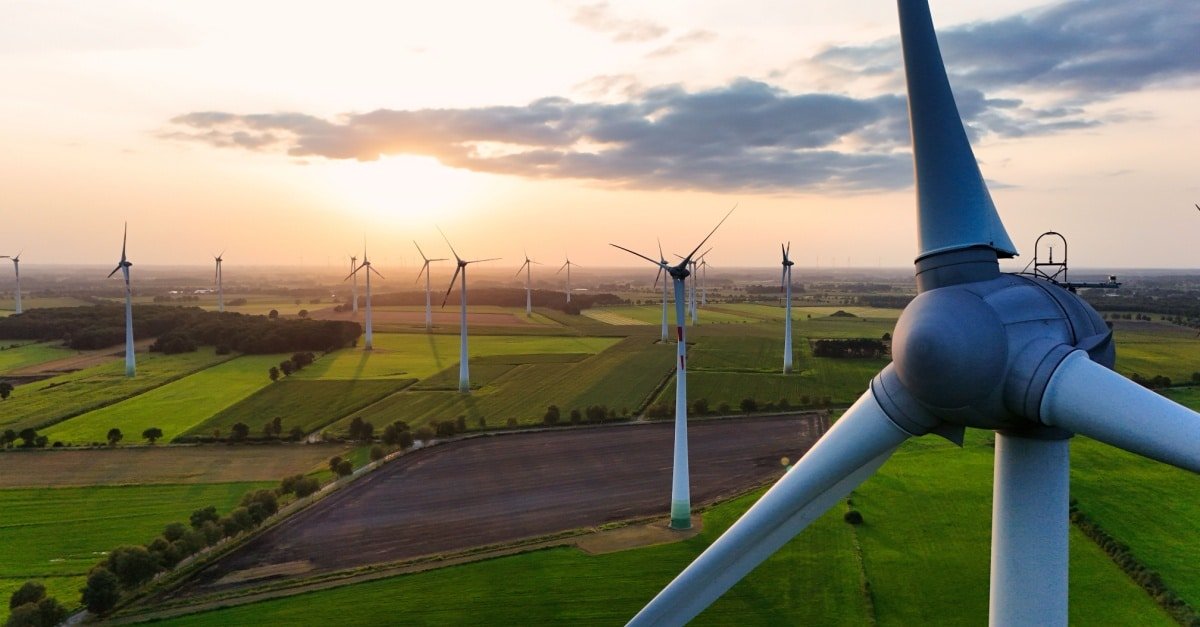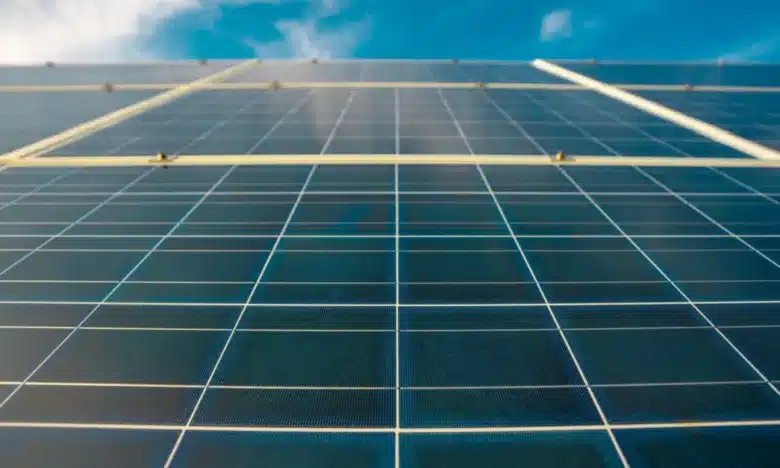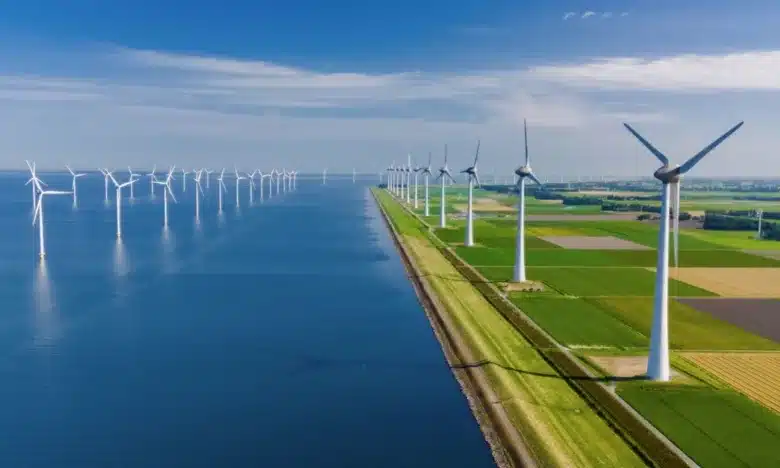
Dunkelflaute: When Wind Went Silent
- July 30, 2025
The term dunkelflaute (literally “dark doldrums”) is now widely used in energy industry discussions to describe multi-day weather events characterized by low wind and cloud-covered skies, which sharply reduce both wind and solar output. Its usage has grown in step with the increased global reliance on variable renewables.
In Germany and northern Europe, these episodes typically occur in winter under stationary, high‑pressure weather systems that bring both weak winds and dense cloud cover, resulting in low wind and solar generation just when demand is highest.
“’Dunkelflaute’ must surely be an early contender for the 2025 Oxford Dictionary word of the year,” said UK-based energy news site Electric Insights. It added that Britain faced two such events between December 2024 and January 2025, with wind output falling to just 6%.
As a result, gas plants ramped up to a record 73% share, and prices spiked—hitting £2,900 ($3,683) per megawatt-hour (MWh) ($3,683) in January, nearly 40 times the average.
(Also read: Lessons from Countries Going Green)
Germany’s winter energy lull
But the global term describing prolonged periods of low wind and overcast skies originated in Germany for good reason.
Germany’s energy landscape took a sharp turn in early 2025 as wind power, its dominant renewable source, stumbled. From January to April, wind generation dropped by a staggering 33% compared to the same period in 2024, wiping out nearly 19 terawatt-hours (TWh) of clean energy.
According to Reuters, renewable energy made up 54.5% of Germany’s power consumption in the first half of the year. That marked a 2.7-point drop from the same period in 2024, largely due to sluggish wind speeds that dampened overall generation.
However, hydropower also struggled, as a warm, dry winter left rivers underfilled, cutting output by 29%. Even with solar generation surging by 39%, total renewable output still fell 14%, leaving the country 13.7 TWh short and highlighting the precarious nature of a power system built on weather-dependent renewables.
Germany’s bold energy shift
Germany is widely recognized as one of the most ambitious and aggressive leaders in renewable energy expansion.
According to the International Energy Agency (IEA), Germany’s energy transition has reshaped the nation’s power landscape, driving a shift toward a system “supplied mainly by renewable energy.” The policy framework led to the phaseout of nuclear energy by the end of 2022, with coal now set to follow by 2038.
But because renewables produced their lowest share of Germany’s electricity in over a decade during early 2025, the country’s energy transition lost momentum. The IEA pointed out that the shortfall in renewable output has been largely filled by fossil fuels, with coal generation rising 18.2%, while natural gas increased by 13.6%. Reuters said that the share of coal, gas, and other fossil sources in the country’s energy mix rose to its highest level since 2018.
“This resurgence in fossil generation has placed Germany’s power system under heightened scrutiny, as the country has promoted itself as a regional energy transition leader and a major proponent of a cleaner European electricity system,” wrote Gavin Maguire, a Reuters columnist.
Wind generation also dropped sharply in December 2024, forcing Germany to restart fossil fuel plants and rely on electricity imports to keep up with demand. With these developments, power prices soared. Intraday wholesale rates neared €1,000 ($1,100) per MWh, more than ten times the year’s typical average.
Effect on the economy
Germany is broadly regarded as the world’s third-largest economy by nominal GDP, trailing only the United States and China. According to the International Monetary Fund, Germany’s projected GDP for 2025 stands at roughly $4.772 trillion, placing it firmly in the global top three in 2025.
But the surge in power prices in late 2024 hit Germany’s industrial sector hard, particularly energy-intensive firms exposed to volatile intraday markets. A steel plant in Saxony paused operations to avoid sky-high electricity costs, while sectors like chemicals and metallurgy faced mounting pressure.
Some companies began shifting production abroad in search of cheaper energy. Climate.news reported that small and mid-sized businesses are buckling, raising fears of a slow erosion of Germany’s once-dominant industrial base.
“Germany’s energy crisis has far-reaching geopolitical implications,” wrote Lance D. Johnson of Climate.news. “High electricity prices in Germany spill over into neighboring countries, making energy unaffordable and fostering resentment.
(Also read: Offshore Wind Challenges: Key Lessons for Philippine Energy Regulators)
A rushed transition?
Benjamin Wehrmann of Clean Energy Wire noted that as Germany leans more on renewables, seasonal dips—especially in winter—are causing greater disruptions. With nuclear plants closed and coal capacity declining, the country’s baseload is under pressure. To avoid shortages, regulators closely monitor capacity and can halt plant closures if replacements lag.
Meanwhile, Johnson highlighted that Germany’s energy transition has taken an ironic environmental turn. The post-Fukushima nuclear exit, intended to enhance safety and sustainability, has instead driven the country to ramp up coal and lignite use to make up for lost capacity.
“Germany’s energy missteps serve as a stark reminder of the need for balanced, pragmatic energy policies,” wrote Johnson. “The country’s overzealous pursuit of renewables, combined with the hasty abandonment of nuclear power, has created a perfect storm of economic decline, environmental degradation, and geopolitical tension.”
Sources:
https://ar5iv.labs.arxiv.org/html/2212.04870
https://www.iea.org/data-and-statistics/data-tools/monthly-electricity-statistics
https://www.climate.news/2025-01-04-germanys-green-energy-dream-turns-into-nightmare.html
https://timesofindia.indiatimes.com/business/india-business/top-10-largest-economies-in-the-world-2025-india-to-become-4th-largest-economy-soon-what-will-be-the-gdp-rankings-of-us-china-check-list/photostory/114020425.cms



